Dear Friends, Find the list of important Reasoning Test Questions 20-20 for upcoming SBI Clerk Mains and competitive exams. We regularly provide 20 reasoning test questions daily for students. Aspirants practice these questions on a regular basis to improve your score in reasoning section. Aspirants preparing for the exams can make use of this 20-20 Reasoning Questions. Here we have started New Series of Practice Materials specially for SBI Clerk Mains 2018. Aspirants those who are preparing for the exams can use this “20-20” Reasoning Questions.
[WpProQuiz 3023]
Click “Start Quiz” to attend these Questions and view Explanation
Direction (1-5): Read the given information carefully answer the questions given below.
Eight people living in eight different floors, they all have different mobiles of different costs. The mobiles are Acer, Lenovo, Asus, Samsung, Oppo, Micromax, Lava and Vivo. All the information is not necessary to be in the same order.
Only one person lives between the person who is using Micromax and Acer. Only two people lives between the person who is using Micromax and the person who is using Samsung. The cost of Lenovo is 5000 and the person who is using Lenovo does not live on the top most floor. The person who is using Lenovo mobile lives on even numbered floor. The person who lives on floor number 6 is using the cheapest mobile. The person who is using Vivo is living immediately above the person who is using Rs.6000 mobile. The person who is using Oppo lives in odd numbered floor above the person who is using Samsung. The person who is using Acer lives one of the floor below the person who is using Micromax. The person who is using Lava mobile lives immediately below the person who is using Rs.5000 mobile. The person who is using Vivo mobile, does not live on floor number 4. The person who is living in the lowermost floor using the mobile, which costs less than 5000. Only two people lives between the person who is using Vivo mobile and the person who is using Asus mobile. The person who likes Asus mobile lives one of the floor above the person who is using Oppo mobile. The cost of Asus mobile is 2000 more than Acer mobile. The cost of Lava mobile is1000 more than the cheapest mobile. The cost of Oppo mobile is 1800 more than the Micromax mobile. The Cost of Vivo mobile is 300 less than the mobile which is using by the person who is living on floor number 7. The person who is living on floor number 6 is using a mobile, which costs 2000 less than Lenovo mobile. The difference of cost of Asus mobile and the person who is living on floor number 3 is 1000. The person who is living immediately above the person who is using Lenovo mobile does not using the costliest mobile.
1) Which of the following mobile is costliest of all?
a) Acer
b) Oppo
c) Lenovo
d) Samsung
e) Asus
2) How many people lives between the person who is using Oppo mobile and Lava mobile?
a) Five
b) Four
c) Six
d) Three
e) None of these
3) How mobiles are cheaper than the mobile, which costs lower than the person who is living in floor number 2?
a) One
b) Two
c) Three
d) More than three
e) None
4) The person who lives on floor number 3 is using which of the following mobile?
a) Acer
b) Oppo
c) Lenovo
d) Samsung
e) Asus
5) What is the cost of the Mobile, which was used by the person who is living in the lowermost floor?
a) 3000
b) 5000
c) 7000
d) 9000
e) 4000
Direction (6-10): Read the given information carefully answer the questions given below.
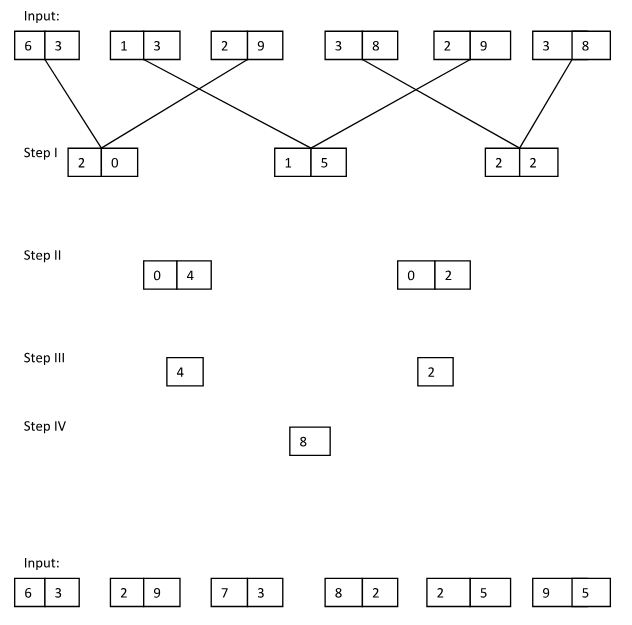
6) What is the average of sum of digits obtained in Step 3?
a) 8
b) 5
c) 2
d) 3
e) None of these
7) Which of the following number will be in the second block of Step 1?
a) 16
b) 18
c) 20
d) 24
e) None of these
8) What is the sum of second digit of second block in Step 2 and the number in Step 4?
a) 8
b) 9
c) 3
d) 7
e) None of these
9) What is the average of three numbers in Step 1? (Consider a block as a number)
a) 9.321
b) 17.28
c) 20.33
d) 19.18
e) None of these
10) What is the ratio between second digit of first block in step 1 to the number in second block in Step 3?
a) 5:1
b) 3: 2
c) 9:7
d) 3: 1
e) None of these
Direction (11-15): Read the given information carefully answer the questions given below.
Ten people are sitting in two rows facing each other. In Row I: A, B, C, D and E are facing south. In Row II: P, Q , R, S and T are facing north. There is one vacant seat in each row. Vacant place in each rows does not face each other. All the information is not necessary to be in the same order.
E faces the person who is an immediate neighbour of R. Only one people sits between Q and P. P does not sits to the left of S. C faces the immediate neighbour of vacant place. D sits second to the right of C. B faces the immediate neighbour of T. D sits at one of the extreme end of the line. B is neither an immediate neighbour of D nor C. Only one people sits between A and B. S does not sits at extreme end of the line. P is not an immediate neighbour of vacant place. P does not faces the person who sits at extreme end of the line.
11) Name the person who sits second to the left of R?
a) Q
b) S
c) T
d) Vacant
e) P
12) How many persons sit between D and B?
a) One
b) Two
c) Three
d) More than three
e) None
13) Who among the following person sits third to the right of the one who faces T ?
a) A
b) B
c) C
d) D
e) None of these
14) Name the person who sits second to the right of one who faces A?
a) R
b) P
c) Q
d) Vacant
e) T
15) Four among the five are alike in such a way based on the certain arrangement, find the one who does not belong to the group?
a) D
b) T
c) Q
d) E
e) C
Direction (16-17): Read the given information carefully answer the questions given below.
a) if statement I is the cause and statement II is its effect.
b) if statement II is the cause and statement I is its effect.
c) if both the statement I and II are independent causes.
d) if both the statements I and II are effects of independent causes.
e) if both the statements I and II are effects of some common cause.
16).
Statement I: Maharashtra State Cabinet decided to provide Rs 3 subsidy for every litre of milk to the co-operative and private producers to manufacture milk powder
Statement II: The demand for the milky products are getting higher day-by-day as the cost of productions becoming higher day by day. The government should take necessary measures to increase the milk products.
17).
Statement I: All-women managed ‘Pink Booths’ to the use of third generation Electronic Voting Machines, the assembly elections in Karnataka are marked by several firsts. In a women-oriented step, 450 “pink booths” called ‘Sakhi’ have
been set up
Statement II: The Karnataka was the first state to organize Marathon for transgender.
Direction (18-20): Read the given information carefully answer the questions given below.
‘A @ B’ means ‘A is father of B’
‘A # B’ means ‘A is mother of B’
‘A $ B’ means ‘A is sister of B’
‘A % B’ means ‘A is brother of B’
‘A & B’ means ‘A is daughter of B’
18) How is P related to Q?
Statement: Q & L # D # Z % P
a) Nephew
b) Niece
c) Mother
d) Father
e) Cannot be determined
19) How is R related to U, as per the given statement?
Statement: K @ R $ A % X & Y $ U
a) Nephew
b) Sister
c) Daughter
d) Niece
e) None of these
20) How many females are in the family as per the given statement?
Statement: L @ J $ E @ I $ S % C & Q
a) One
b) Two
c) Three
d) More than three
e) Cannot be determined
Answers:
Direction (1-5):

i). Only one people lives between the person who is using Micromax and Acer.
ii). Only two people lives between the person who is using Micromax and the person who is using Samsung.
iii). The person who is using Oppo lives in odd numbered floor above the person who is using Samsung.
iv). The person who is using Acer lives one of the floor below the person who is using Micromax.


v). The cost of Lenovo is 5000 and the person who is using Lenovo does not live on the top most floor.
vi). The person who is using Lava mobile lives immediately below the person who is using Rs.5000 mobile.
vii). The person who is using Lenovo mobile lives on even numbered floor.

Case (v) –> does not follow condition (vii) and condition (vi)

Case (vi) –> does not follow condition (v)
Case(vii) –> does not follow condition (vii)
viii). The person who is using Vivo mobile, does not live on floor number 4.
ix). The person who is using Vivo is living immediately above the person who is using Rs.6000 mobile.
x). The person who lives on floor number 6 is using the cheapest mobile.
xi). The person who is living in lowermost floor have the mobile, which cost is less than 5000.
xii). Only two people lives between the person who is using Vivo mobile and the person who is using Asus mobile.
xiii). The person who is using Asus mobile lives one of the floor above the person who is using Oppo mobile.

Case(i)a –> does not follow condition (x)
Case(iv) –> does not follow condition (xii)
Case(ii) –> does not follow condition (xiii)
| Case(i)b | ||
| Floor | Mobile | Cost |
| 8 | Micromax | |
| 7 | Asus | |
| 6 | Acer | |
| 5 | Samsung | |
| 4 | Vivo | |
| 3 | Oppo | 6000 |
| 2 | Lenovo | 5000 |
| 1 | Lava | |
xiv). The cost of Asus mobile is 2000 more than Acer mobile.
xv). The cost of Lava mobile of 1000 more than the cheapest mobile.
xvi). The cost of Oppo mobile is 1800 more than the Micromax mobile.
xvii). The Cost of Vivo mobile is 300 less than the mobile which used by the person who is living in floor number 7.
xviii). The person who is living on floor number 6 is using a mobile, which costs 2000 less than Lenovo mobile.
xix). The difference of cost of Asus mobile and the person who is living on floor number 3 is 1000.
xx). The person who is living immediately above the person who has Lenovo mobile does not using the costliest mobile.

Case(i)b –> does not follow initial condition
1) Answer: e)
2) Answer: a)
3) Answer: d)
4) Answer: d)
5) Answer: e)
Direction (6-10):
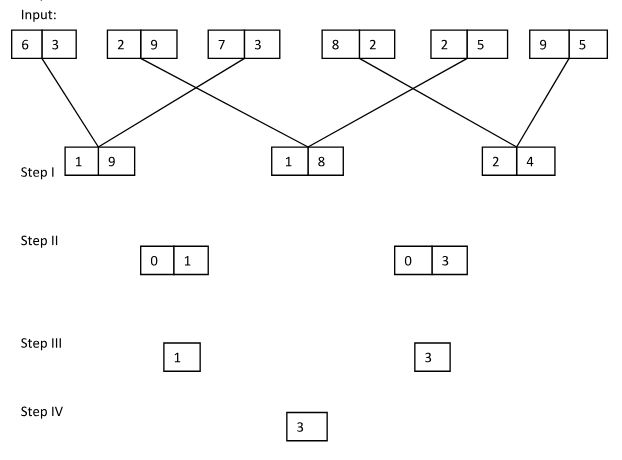
Logic:
Step 1: The Addition of sum of first digit and second digit of first block and sum of first digit and second digit of third block. Eg, {(6+3) + (7+3) = 19}. This same pattern is repeated for second black and fifth block, fourth block and sixth block.
Step 2: The difference of sum of first digit and second digit of first block and second block. This same pattern is repeated for second and third blocks.
Step 3: The sum first and second digits of first block. The same process should be applied for Second block
Step 4: Multiplication of two numbers.
6) Answer: c)
7) Answer: b)
8) Answer: e)
9) Answer: c)
10) Answer: d)
Direction (11-15):
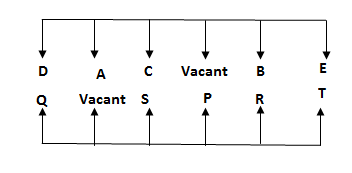
i). D sits second to the right of C.
ii). D sits at one of the extreme end of the line.
iii). B is neither an immediate neighbour of D nor C.
iv). B faces the immediate neighbour of T.
v). C faces the immediate neighbour of vacant place.
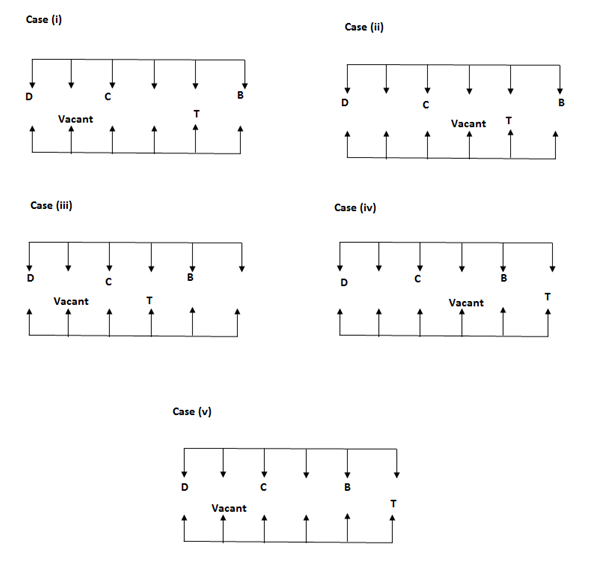
vi). Only one people sits between Q and P.
vii). P does not sits to the left of S.
viii). E faces the person who is an immediate neighbour of R.
ix). Only one people sits between A and B.
x). S does not sits at extreme end of the line.
xi). P is not an immediate neighbour of vacant place.
xii). P does not faces the person who sits at extreme end of the line.
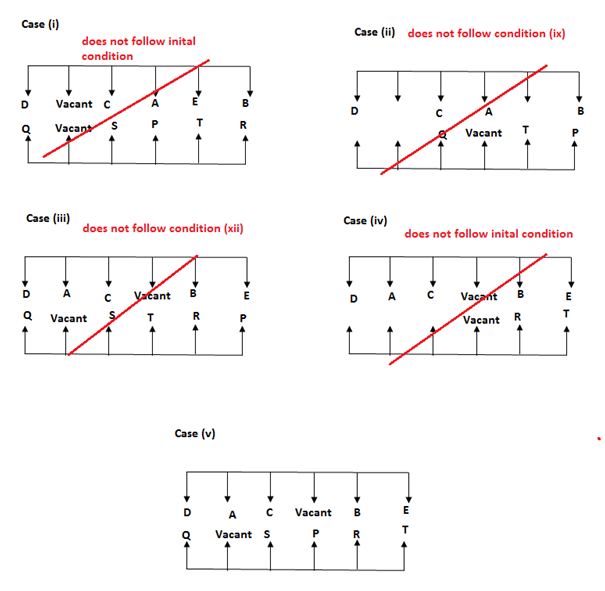
11) Answer: b)
12) Answer: b)
13) Answer: c)
14) Answer: b)
15) Answer: e)
Direction (16-17):
16) Answer: b)
The demand is high so, state government is decided to provide subsidy for every litre of milk.
17) Answer: e)
To support and encourage transgender, state government has initiated such measures.
Direction (18-20):
18) Answer: e)
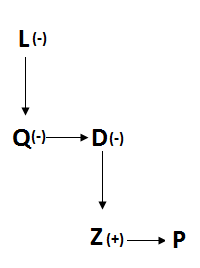
19) Answer: d)
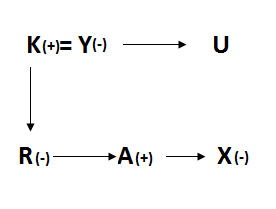
20) Answer: d)
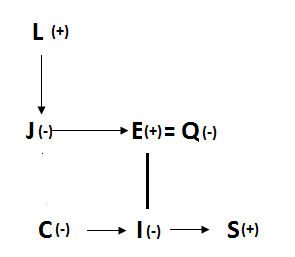
Daily Practice Test Schedule | Good Luck
| Topic | Daily Publishing Time |
| Daily News Papers & Editorials | 8.00 AM |
| Current Affairs Quiz | 9.00 AM |
| Quantitative Aptitude “20-20” | 11.00 AM |
| Vocabulary (Based on The Hindu) | 12.00 PM |
| General Awareness “20-20” | 1.00 PM |
| English Language “20-20” | 2.00 PM |
| Reasoning Puzzles & Seating | 4.00 PM |
| Daily Current Affairs Updates | 5.00 PM |
| Data Interpretation / Application Sums (Topic Wise) | 6.00 PM |
| Reasoning Ability “20-20” | 7.00 PM |
| English Language (New Pattern Questions) | 8.00 PM |





